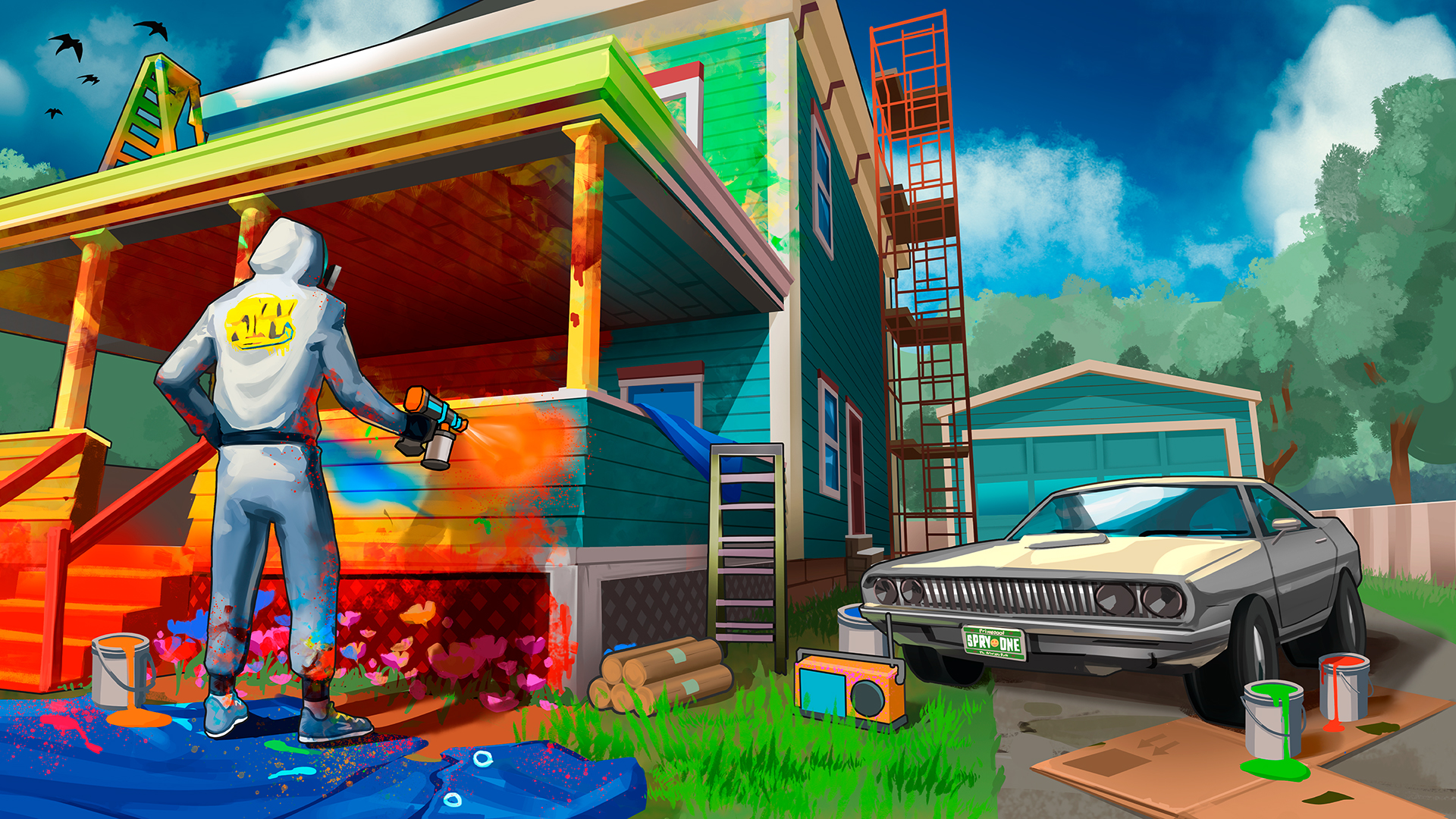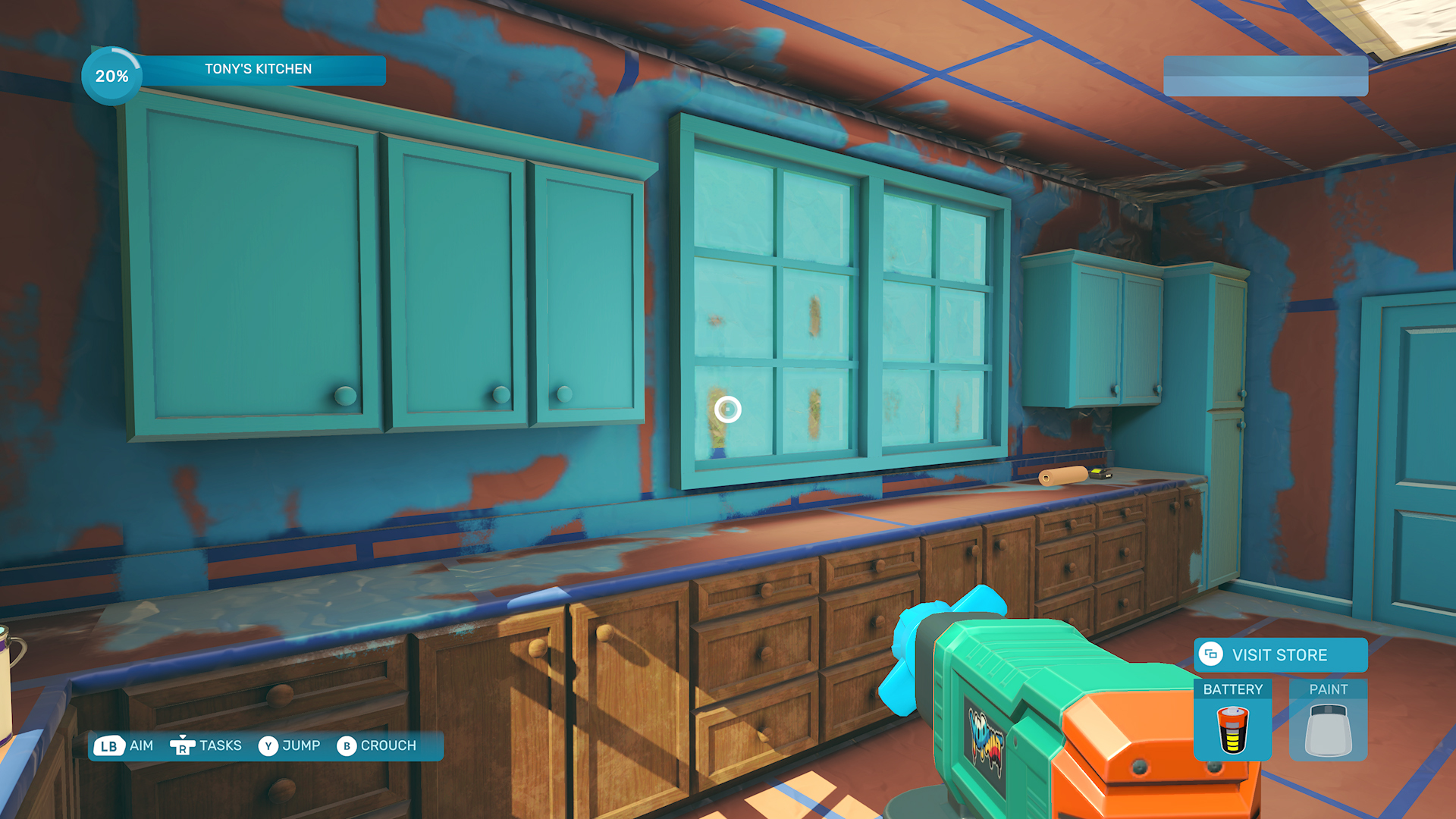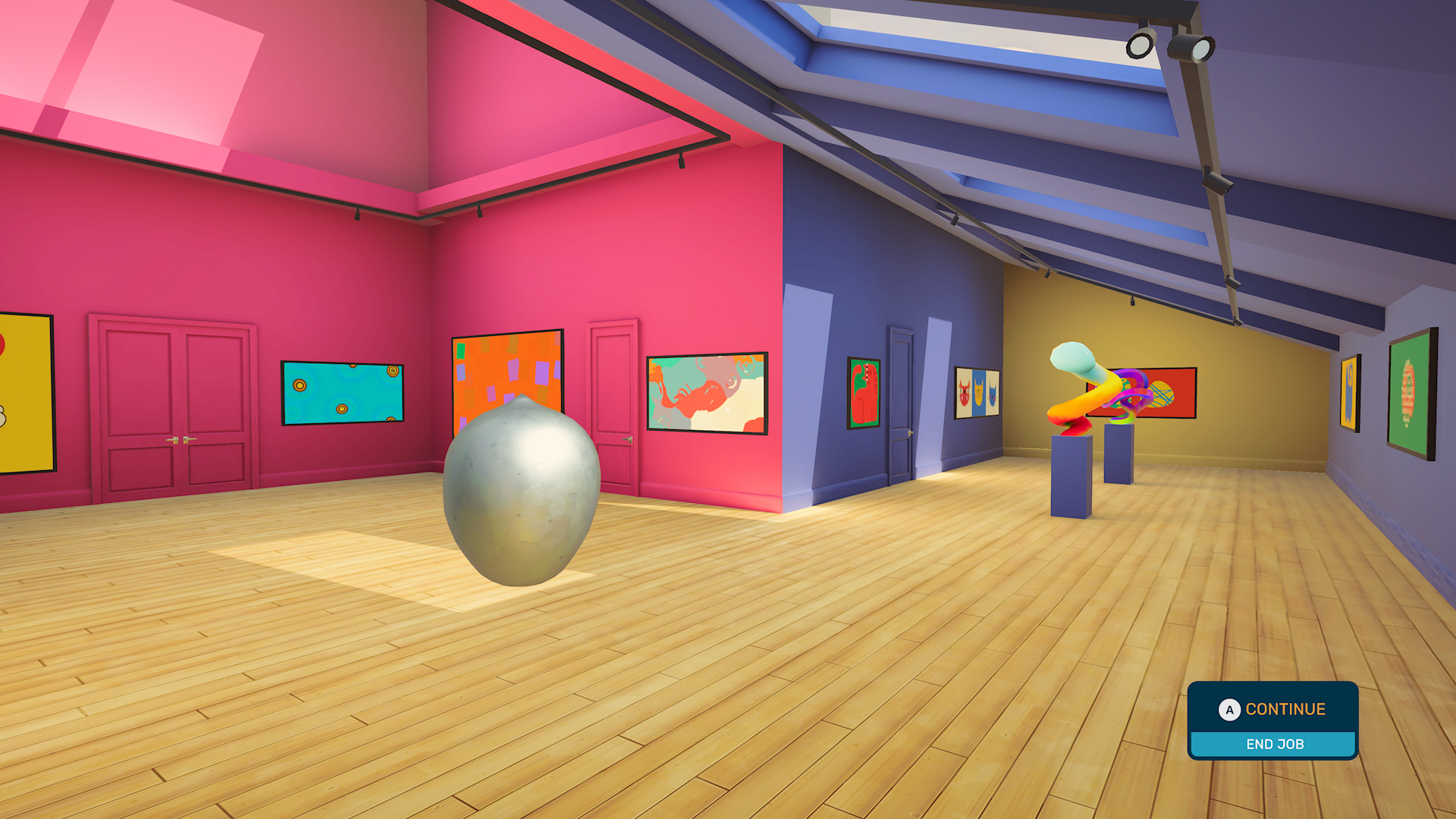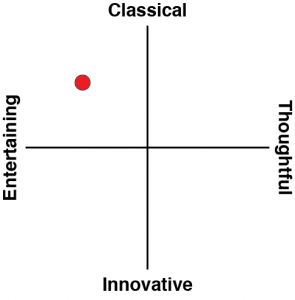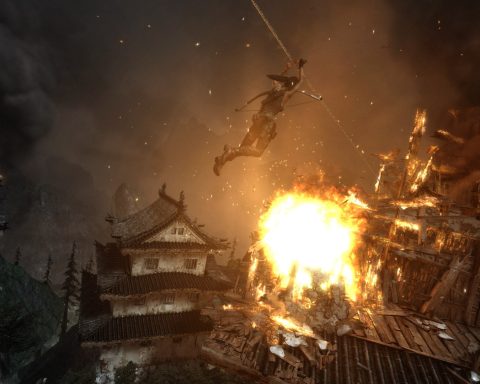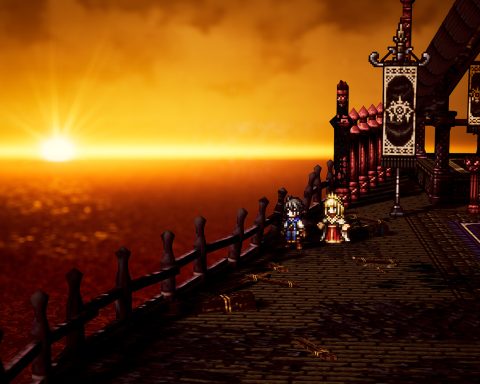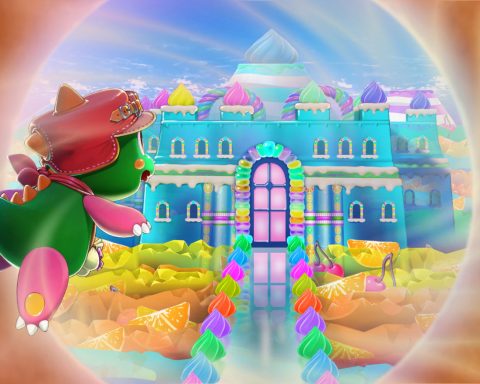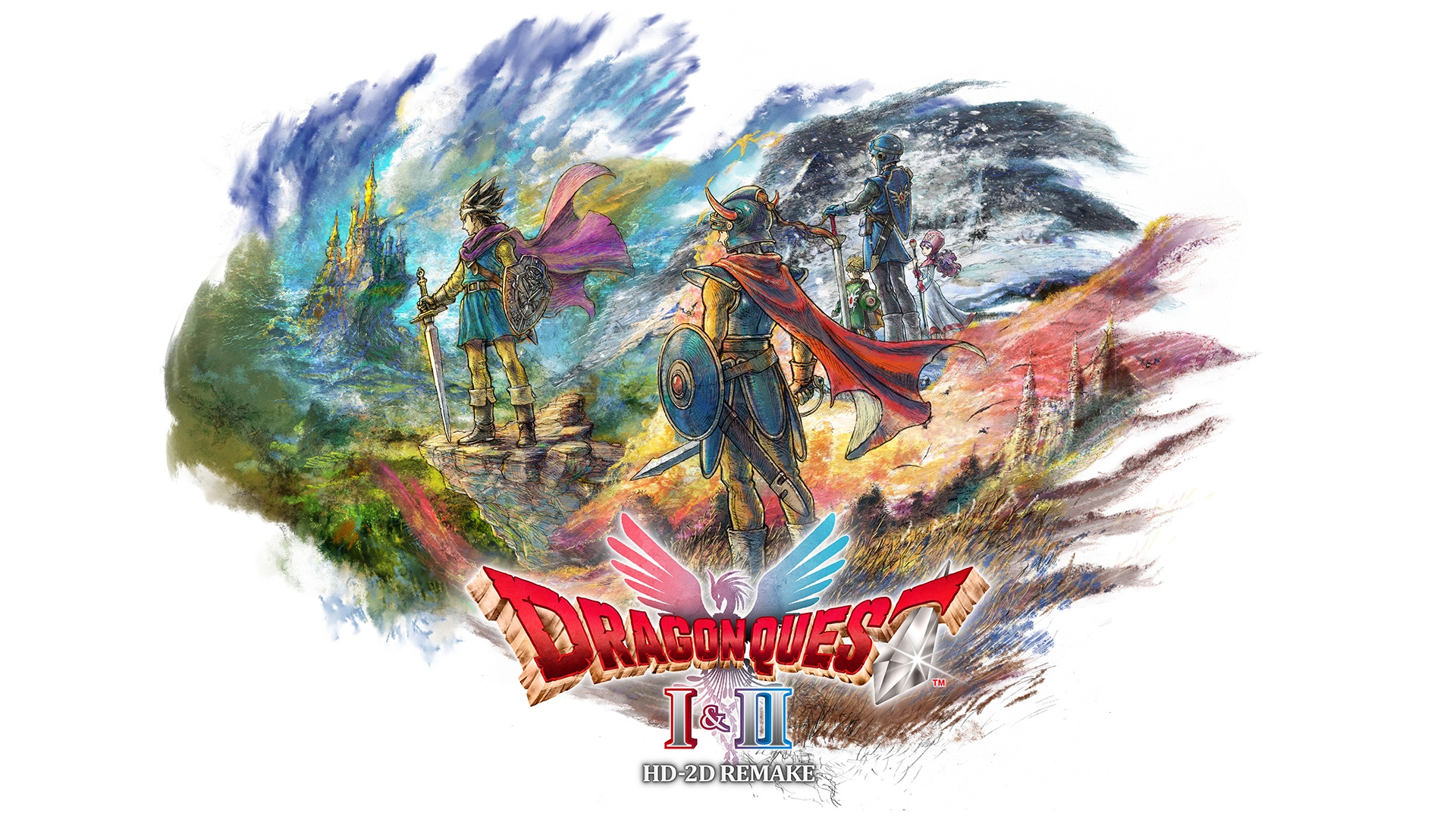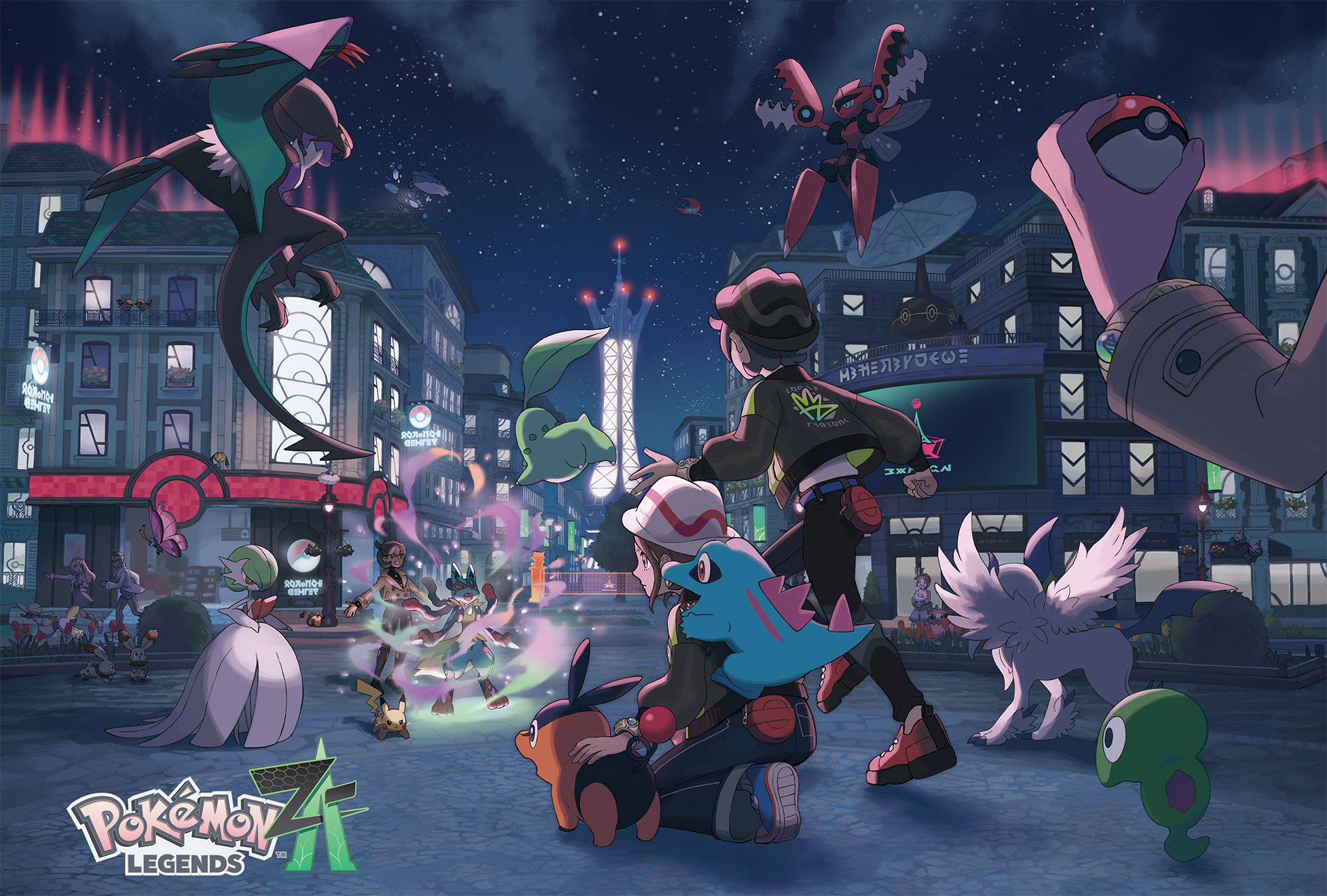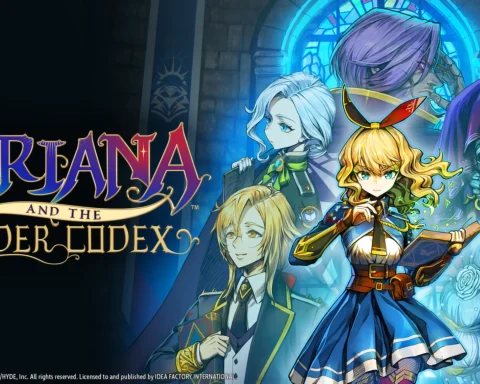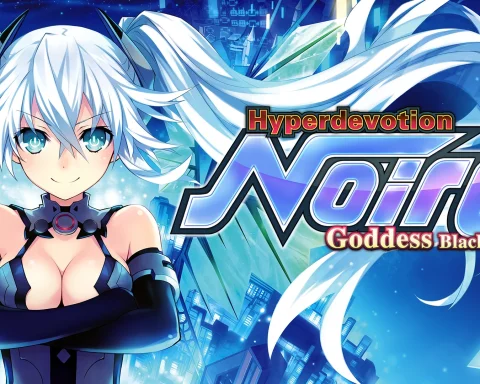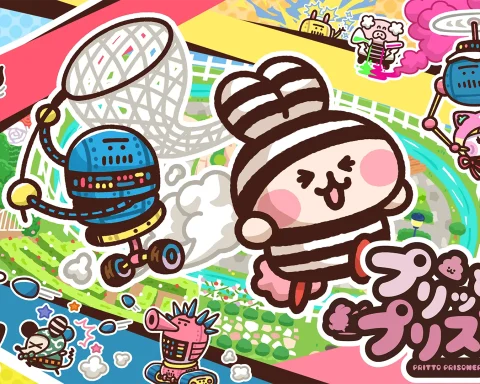I’m an artistic person, it’s in my genes. I’m also a very Type-A kind of person, and I prefer chill games that help me relax to games with violence. So, as a cozy game about using colourful spray paint to make a town vibrant again, Spray Paint Simulator is right up my alley. And for several hours after I started playing it, I was darn near ready to give up this job and start my own spray painting company in real life. Alas, many happy hours in career mode, I found my enthusiasm waning. I find that’s quite normal in games, a lull in the middle. But things didn’t improve after I hit that point.
I am not going to compare Spray Paint Simulator to what I assume is one of its inspirations, PowerWash Simulator… except to begin explaining the concept. Imagine PowerWash Simulator in reverse and with paint. In Spray Paint Simulator, the boring cleaning part is done for you, and it’s time to make Splatersville look shiny and new! You will need to prepare the space by covering the areas you don’t want painted with paper and tape, and removing any items that can be removed. Sometimes you need to fix things, like tires or holes, but that’s equally as simple. In career mode, you’ll choose the colour(s) requested by the client, whereas in free spray mode, you create any combinations you’d like (or just paint your entire avatar lavender, not that I know from personal experience). Between colours, you’ll have to unmask some areas and mask others over again.
The story is that your rich friend (and landlord), Vincent, is encouraging you to start up a painting business. Your first job is his vintage car. When word of mouth starts getting around, you get your first “real” customer, Tony. He is very clearly a mob boss and threatens you into doing well (not that you needed it). Once he’s been pleased, word of your skills gets around quickly. You do work for people like Ron, who wants a tour bus refreshed after several decades of wear, and Helen, who wants her art gallery to be as bright as the artwork that hangs on its walls.
The character avatars are cute and cartoony, and each person is unique. Unfortunately, there isn’t a ton of depth there. Just a few texts along the way and a thanks at the end. Other than being in the same town, there isn’t a ton of story to be found by simply playing through. This isn’t helped by the fact that you cannot re-read old messages to see if they can be linked. Some story aspects can be found through hidden letters, though the only way to know about those is to either find one or notice it buried in a stats menu with your game time and other details.
The spray painting portion of the game is okay. It wasn’t stellar or revolutionary, but the first-person aspect of the game works well enough. I appreciated the ability to either move the camera or the nozzle. Your gear is equipped with a flashlight to help you see into dark areas with more clarity. It is obvious what you need to complete when you press down the R stick, and anything unpainted is highlighted in your chosen colour (and for your chosen amount of time). There is also a list of items to paint, with a completion percentage and dollar amount earned; from there, you can select one, and its highlight will appear until you begin painting it. The items listed aren’t usually difficult to find, as the entire thing is highlighted, not just the missing paint.
Unfortunately, everything else regarding the gameplay was meh. As the jobs get larger, they get more detailed and complex. Progression is great! The problem is that you often find yourself painting with just one colour for a few hours. It becomes tedious, mentally and physically. By the time I was painting the iron bridge marshmallow mind for Fiona (about 7.5 hours into an expected gameplay time of 15 hours), I was losing my mind. I would be happy to never see that shade of pale green again. And it comes after hours spent in an art gallery, painting massive walls in one of three colours. I probably spent 30-45 minutes per colour, if not more. Staring at one colour for that long just isn’t fun. I prefer levels like the tour bus, where there are layers of masking and painting to do with smaller areas to paint. A bigger thing to paint doesn’t always equal more fun. (There is a giant robot, though. Giant robots are fun!)
Another tedious part of the game is the menus. Everything is in the menus. You come into each level completely blank, having to choose all your gear from the menu instead of just starting with what you used last. To change attachments such as nozzles, you must go through a clunky store item. Not even just items you own: you have to go where everything is listed, whether you own it or not. Once you purchase or select your item, you have to put it down and immediately pick it back up to use it. It’s an effort in futility.
The store menu includes sections for equipment (sprayers, ladders, etc.), preparation (paper, tape, filler), attachments (nozzles, footwear), paint, and your avatar. There are over two dozen colours of paint to choose from, each with a cutesy title like Lazy Lizard, Fluffy Fuchsia, Red Red Redemption, or Elephant Burp. (There is another “lazy” in the list, Lazy Lavender. The devs must have gotten tired of naming colours.) At least everything in the avatar section comes unlocked, so you don’t need to buy clothing to look your best! I went for a look of pink and blue myself, though I was very tempted to go monochromatic, as my doctor tells me that’s what all the cool kids are doing these days.
Spray Paint Simulator’s publisher, Whitethorn Games, is serious about game accessibility, and that is demonstrated through the options in the game. Each option comes with a little description of what it does (though “dead zone” remains a mystery to me). Most options are dedicated to playing and seeing the game, with a handful available to adjust the audio. You can choose your camera sensitivity, spray speed, dead zone, camera smoother, and highlight time through sliders. There is a vibration toggle, a centre spray toggle, and the ability to choose how to toggle the paint (tap, tap-hold, hold). Due to physical limitations, my main problems with games are visuals that cause me motion sickness and gameplay that causes me pain. The available options here alleviated all of my fears. I was pleasantly surprised that the game didn’t cause me to feel ill, as any first-person game (or visual novel, for that matter) I played in the last few months has given me that fate. And despite playing in hours-long sessions, I never came away from the game with more pain than I brought in.
I truly wish I had better things to say about Spray Paint Simulator. I do have good things to say: it’s really chill, the graphics are vibrant, the painting gameplay is great, and the options cover a good amount of possibilities. Unfortunately, the game is weighed down by its clunkiness and lack of story. (Yes, even a game about spray painting needs a story.) I would like to say I will go back to it, but I’m left wondering if I’ll ever feel that itch to return.
Buy the hottest games with Amazon.
By purchasing from this link, you support DDNet.
Each sale earns us a small commission.
